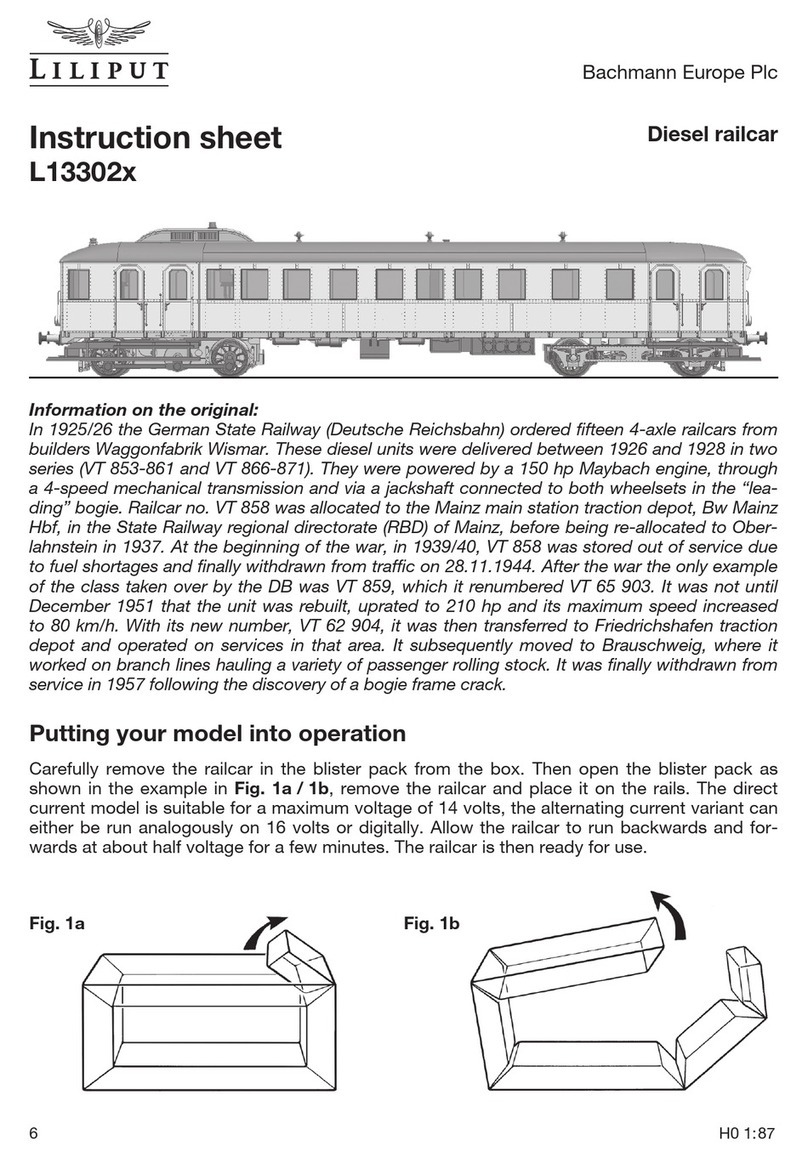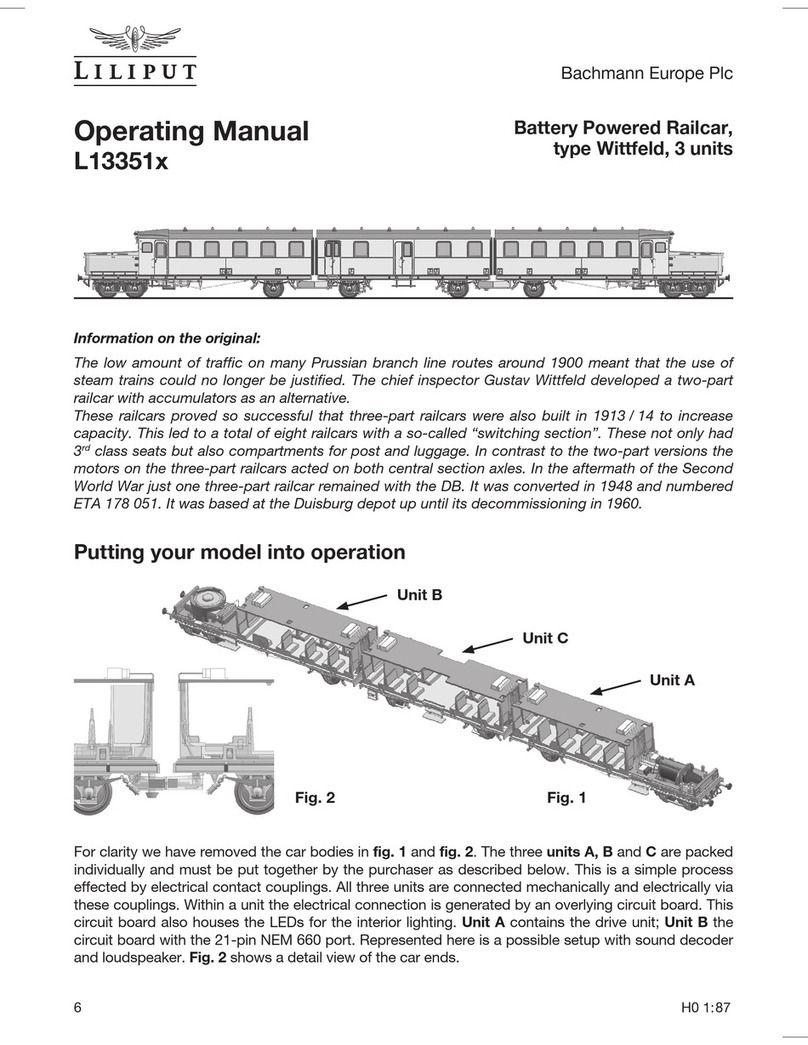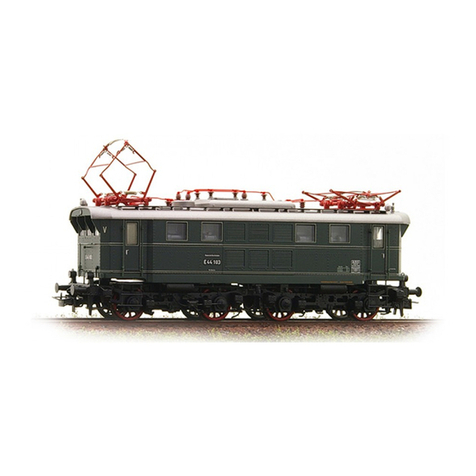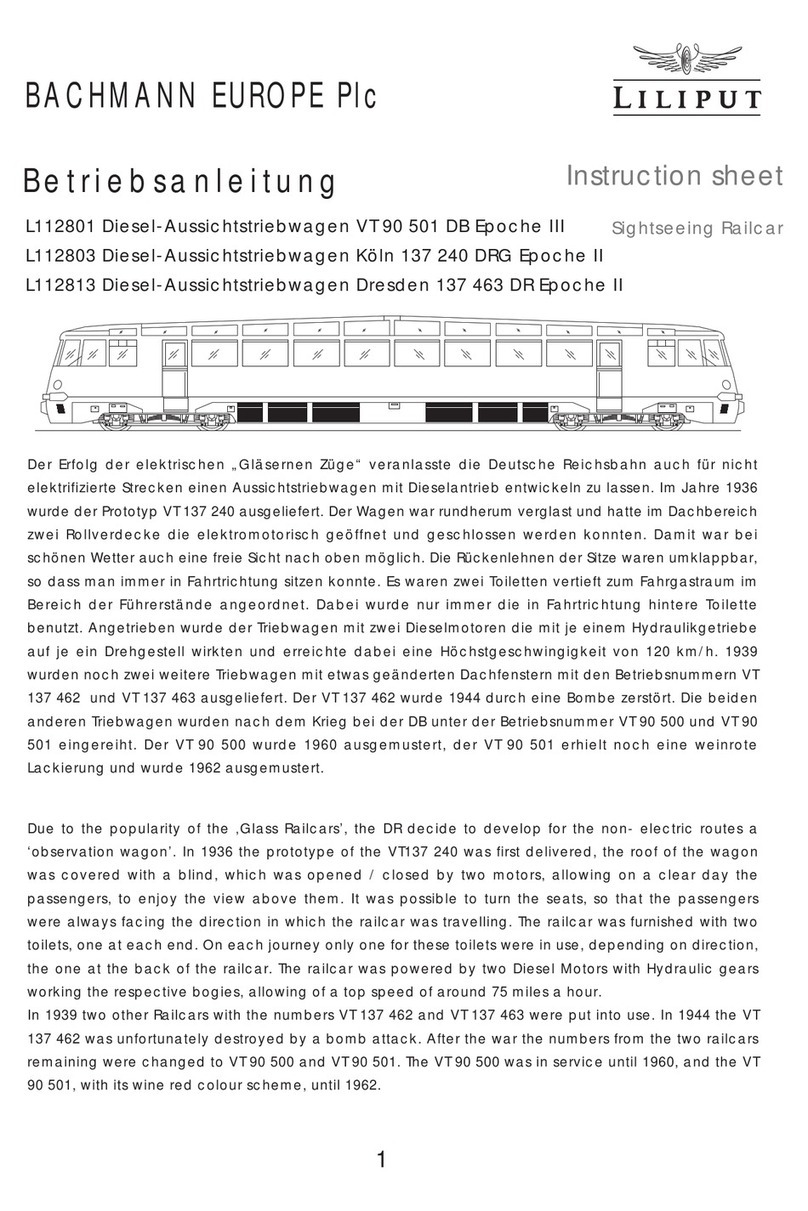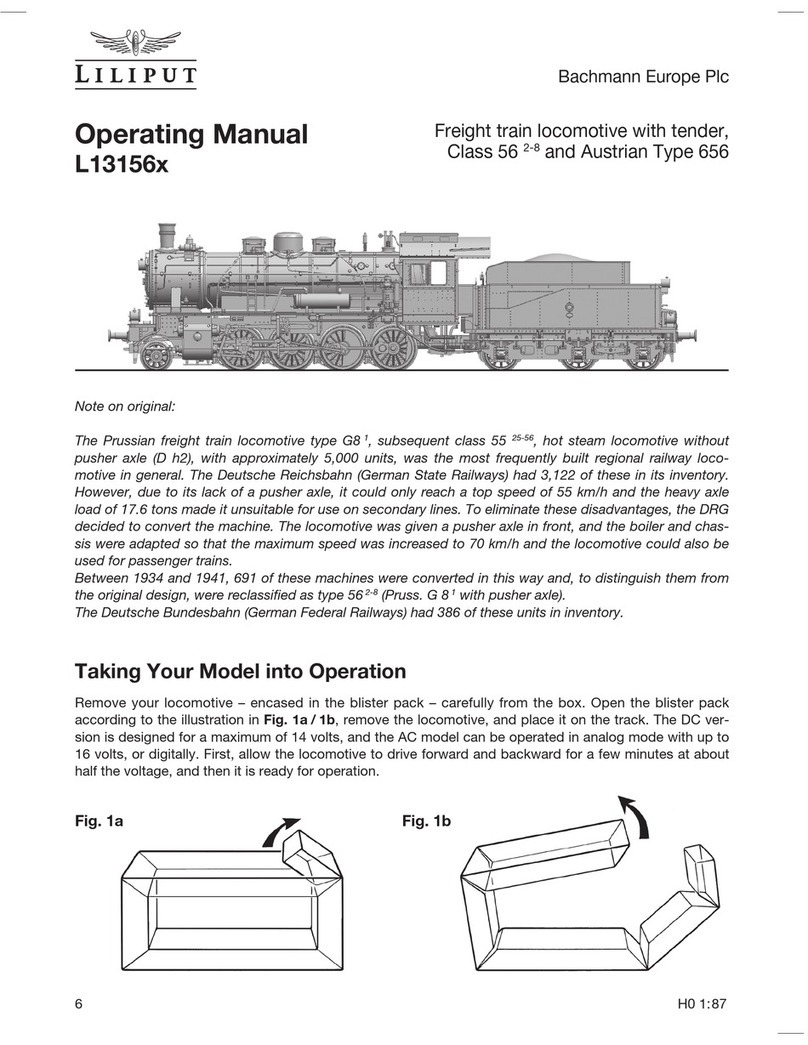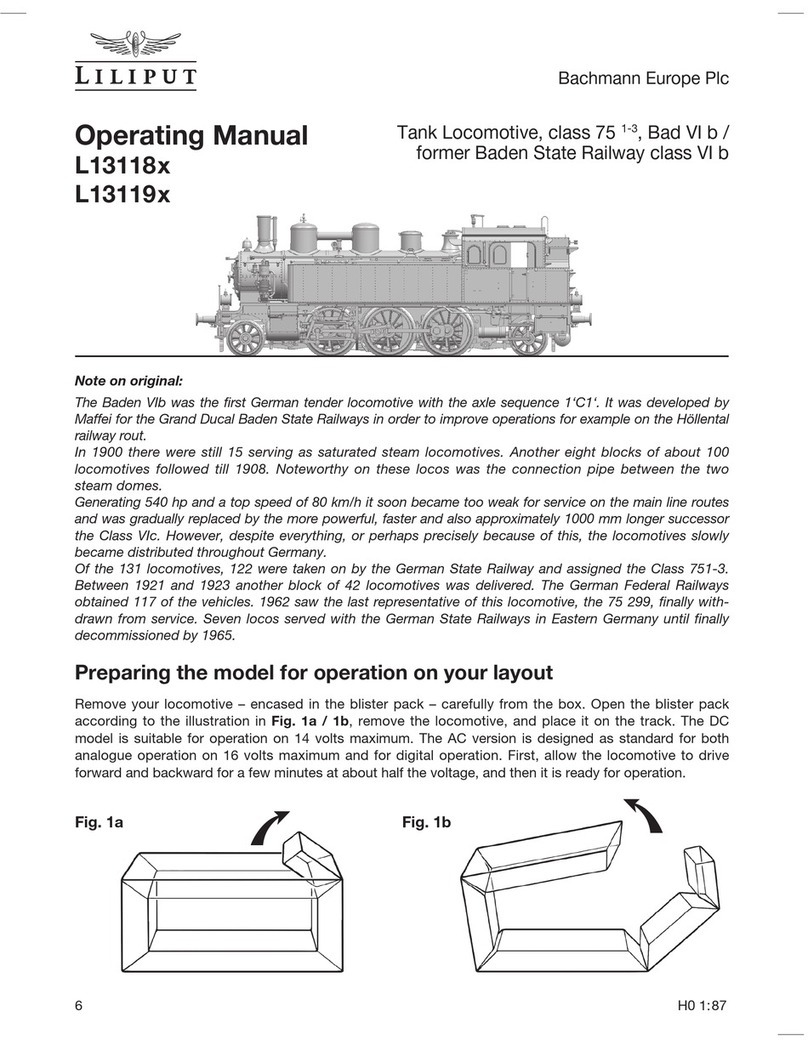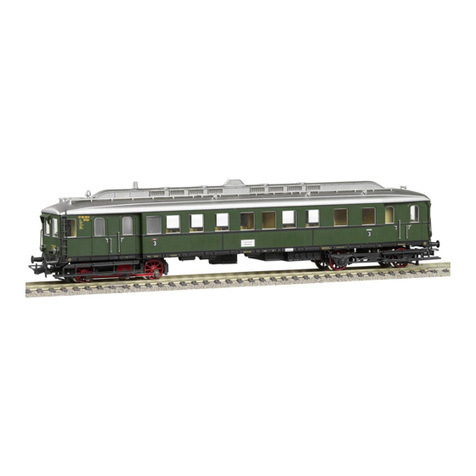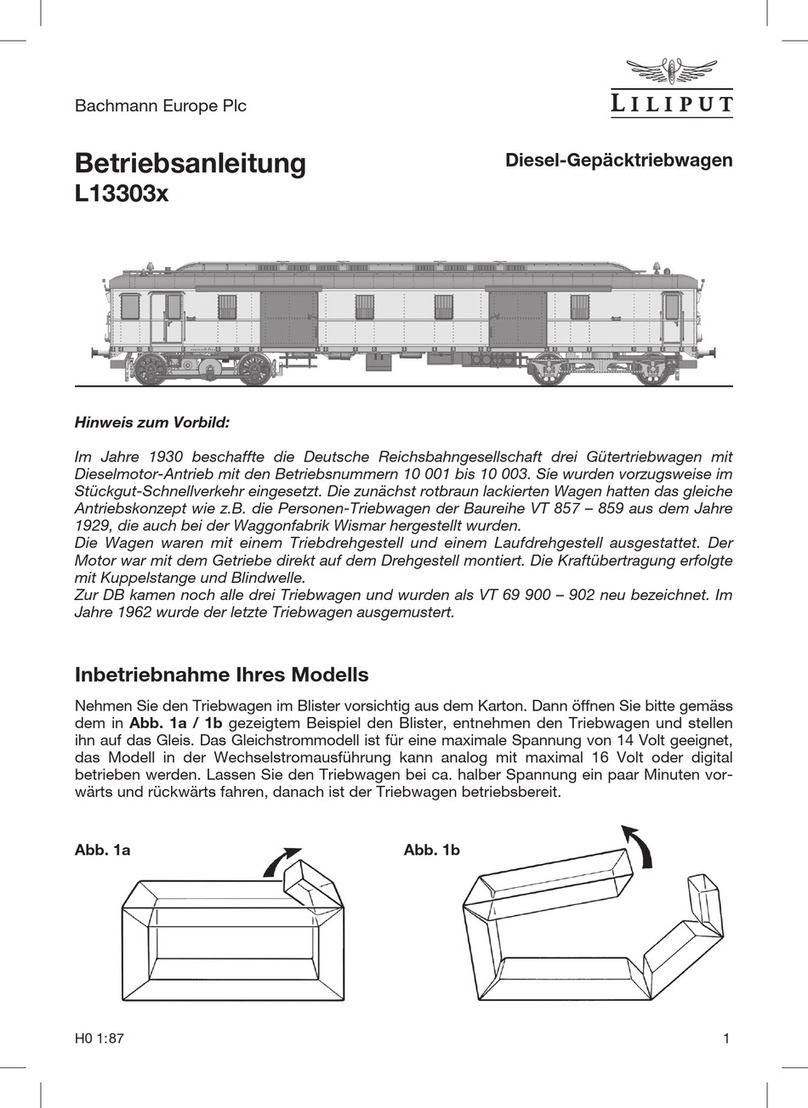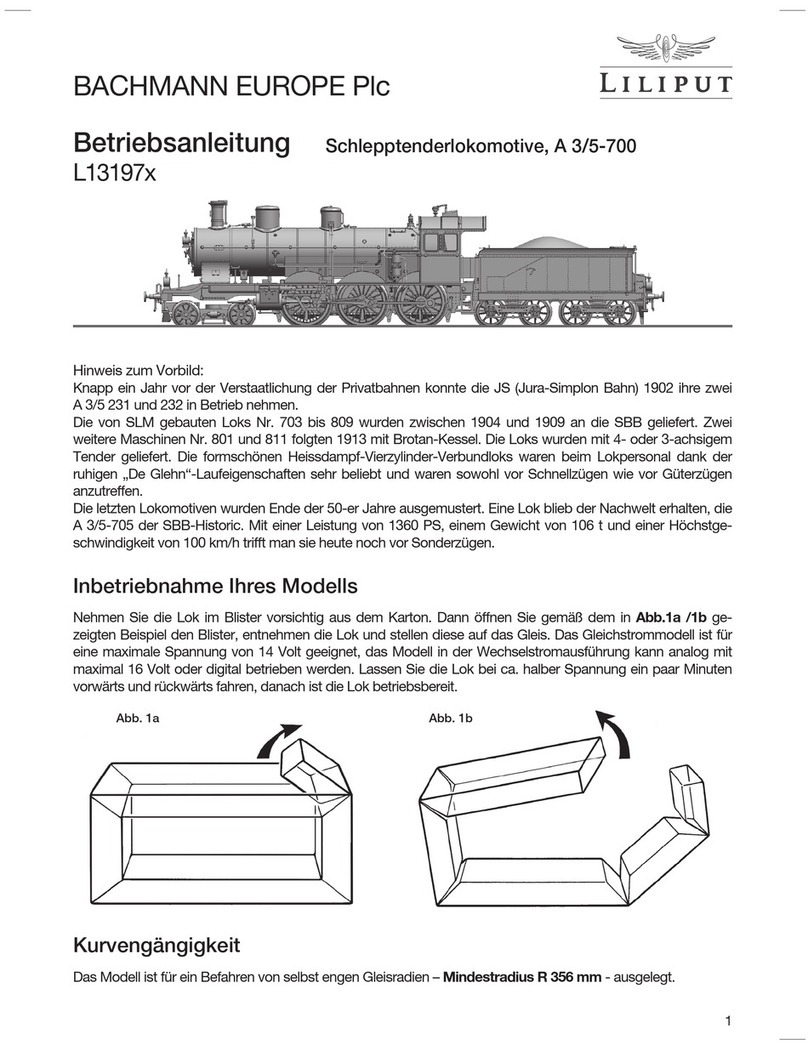
N 1:160 1
Betriebsanleitung
L163971…99
Regional-Triebwagen FLIRT
Flinker Leichter Innovativer Regional Triebzug
Hinweis zum Vorbild:
Als die Firma STADLER RAIL, Bussnang (Schweiz), im Juni 2004 zum ersten Mal den neuentwickelten Regional-
Triebwagen FLIRT der Öffentlichkeit präsentierte, ahnte sie noch nicht, welch ein Erfolgsprodukt sie dem welt-
weiten Markt anbot. Ursprünglich nur für die Schweiz, evtl. noch für Deutschland konzipiert, entwickelte sich der
FLIRT auch international zu einem Verkaufsschlager. Mittlerweile wurden bereits über 500 Exemplare europaweit
bestellt. Verkauft wurde der FLIRT zum Beispiel auch nach Italien, Österreich, Holland, Norwegen, Rußland, Un-
garn, Polen, Finnland und sogar nach Algerien. Obwohl als Regional-Triebwagen bezeichnet, wird der FLIRT auch
grenzüberschreitend eingesetzt. So fährt er zum Beispiel von Basel aus in das Wiesental im Schwarzwald. Die
Eurobahn fährt vom Ruhrgebiet bis nach Venlo in Holland und seit 2009 fährt die Salzburger Lokalbahn bis nach
Berchtesgaden.
Der FLIRT ist modular aufgebaut und wird 2 – 6-teilig angeboten. Je nach Verwendung hat eine Wagen-Einheit 4
Türen (als S-Bahn Version) oder 2 Türen (als Regionalzug). Jeweils die beiden Enddrehgestelle sind angetrieben.
Besondere Merkmale des FLIRT sind die grosse Beschleunigung, die starke Bremskraft und das geringe Gewicht.
Höchstgeschwindigkeit = 160km/h. Die Wageneinheiten sind über Jakobs-Drehgestelle verbunden und haben ei-
nen türfreien, offenen Faltenbalg-Durchgang. Bauintern sind die Wageneinheiten mit Buchstaben gekennzeichnet.
Die beiden vorderen Einheiten mit dem Führerstand sind jeweils A und B. Die Zwischenwagen sind mit C, D, E
und F je nach Triebwagengrösse bezeichnet. Ein vierteiliger Triebwagen hat die Einheiten B-C-D-A. Diese Bezeich-
nung übernimmt LILIPUT auch in der Betriebsanleitung und Ersatzteilliste für das Modell.
Der FLIRT kann in Mehrfachtraktion fahren und ist dann über eine Mittelpufferkupplung gekoppelt. Verschiedene
Triebwagen haben als Stoss-Schutz zusätzlich auch zwei Standardpuffer an den Frontseiten.
Dieses Foto zeigt
den FLIRT ohne
bahndienstliche
Anschriften,
stellvertretend für
alle Bahngesell-
schaften, die den
FLIRT betreiben.
Folie
Abb. 1
Vorbereiten Ihres Modells
Das Modell des FLIRT ist komplett fertig mon-
tiert und liegt mit einer Folie umhüllt in einer
zweiteiligen Blister-Verpackung (Abb.1). Nach
öffnen des Deckels heben Sie das Modell mit
der Folie aus dem Fach und legen den Trieb-
wagen mit der Folie neben das Gleis. Danach
können Sie das Modell aufgleisen. Der Trieb-
wagen ist zwischen den Einheiten so flexibel,
daß Sie Einheit für Einheit auf das Gleis stellen
können. Nach dem Aufgleisen ist das Modell
betriebsbereit.
